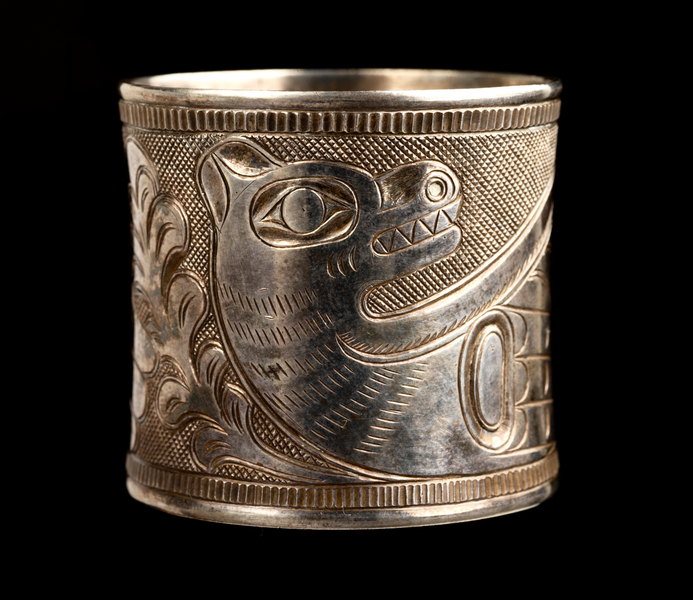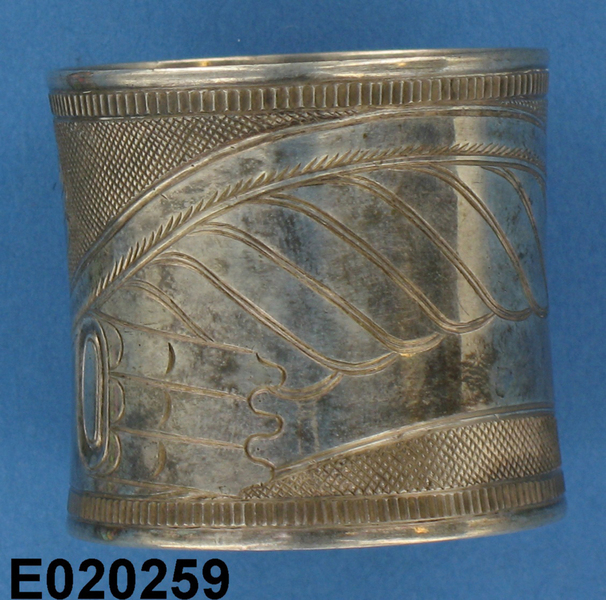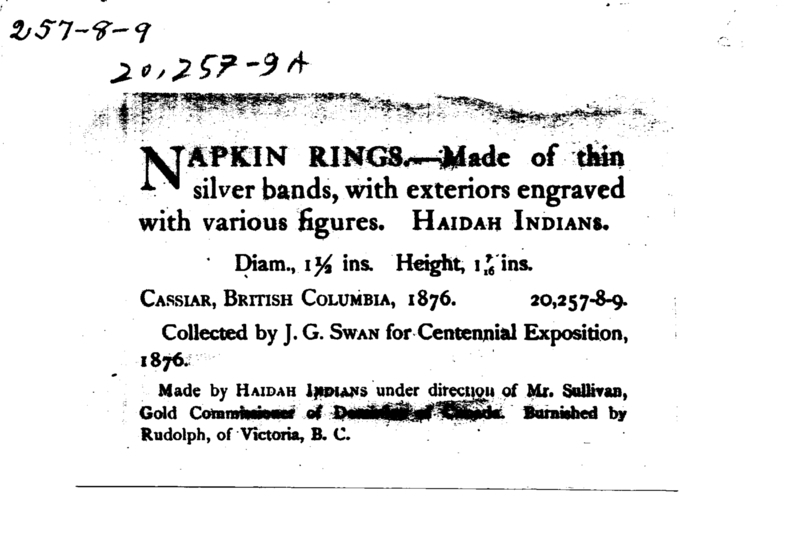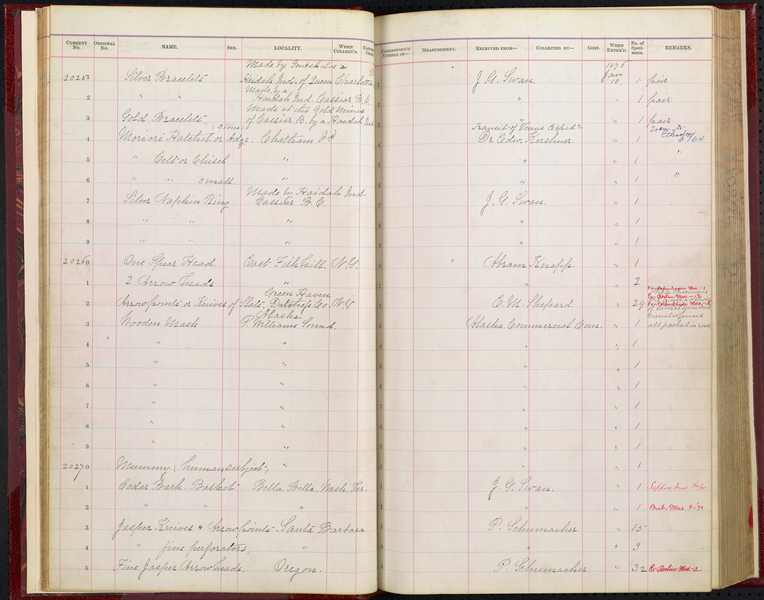Silver Napkin-Ring Item Number: E20259-0 from the National Museum of Natural History









Notes
FROM CARD: "20258 & 20259 IDENTIFIED [in MARCH, 1979] BY PETER MACNAIR, B.C. PROVINCIAL MUSEUM, VICTORIA, AS MADE BY CHARLES EDENSHAW. INVENTORIED 1979." FROM CARD [for E20257 through 20259], 19TH OR EARLY 20TH CENTURY EXHIBIT LABEL: "NAPKIN RINGS.---MADE OF THIN SILVER BANDS, WITH EXTERIORS ENGRAVED WITH VARIOUS FIGURES. HAIDAH INDIANS. DIAM., 1 1/2 INS. HEIGHT, 1 7/16 INS. CASSIAR, BRITISH COLUMBIA, 1876. COLLECTED BY J. G. SWAN FOR CENTENNIAL EXPOSITION, 1876. MADE BY HAIDAH INDIANS UNDER DIRECTION OF MR. SULLIVAN, GOLD COMMISSIONER OF DOMINION OF CANADA. BURNISHED BY RUDOLPH, OF VICTORIA, B. C."E20258 and E20259 had been attributed to Charles Edenshaw by Peter Macnair in 1979. However, Robin Wright, 2013, attributes them as Haida, but by an unknown maker. She also identifies the figure on E20259 as a sea lion. Illus. Fig. 205, p. 180 in Wright, Robin Kathleen, Daina Augaitis, Robert Davidson, and James Hart. 2013. Charles Edenshaw. London: Black Dog Publishing. The napkin ring is attributed to an unknown maker rather than to Charles Edenshaw, which is discussed on pp. 180-181, and design is described as consisting of a sea lion and foliate scrolls. "This napkin ring was collected at the Cassiar Mine in British Columbia by James G. Swan in 1875. It was one of the many pieces he collected on that trip that featured foliate scrollwork demonstrating the popularity of that motif at the time."
Item History
- Made in British Columbia, Canada
- Collected by James G. Swan in British Columbia, Canada during 1875
- Received during 1876
What
- Name
- Silver Napkin-Ring
- Identification Number
- E20259-0
- Type of Item
- napkin ring
Who
- Culture
- Haida
- Field Collector
- James G. Swan
Where
- Holding Institution
- National Museum of Natural History
- Made in
- British Columbia, Canada
- Collected in
- British Columbia, Canada
When
- Collection Date
- during 1875
- Acquisition Date
- during 1876
Other
- Accession Number
- 004669